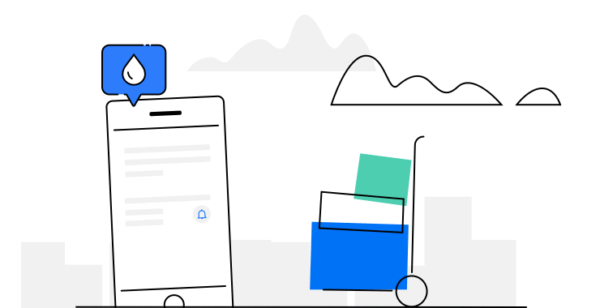“There’s an opportunity for brands to build a lifetime of customer trust and loyalty right now”
With the Coronavirus expanding in the United States, people’s behavior is changing. Partly because of local government mandating change such as schools closing, and partly because of reactionary behavior during volatile times, such as stocking up on supplies.
One industry that will see a significant increase in activity is the on-demand space, and specifically in three core areas including transportation, food delivery, and general home goods delivery.
Transportation:
Before the Coronavirus hit, people were taking public transportation as they normally would. The general flu season didn’t have much, if any impact on people’s willingness to take buses, subways, trains, boats…etc. Since the Coronavirus began spreading, however, both physically and psychologically, people have become more inclined to limit their exposure to large numbers of people. Thus, some will work from home to avoid the commute altogether, but others will demand ride sharing services in ways which they never would have historically. People’s needs will go up, putting pressure on the marketplace to balance supply during volatile times of demand increase.
Restaurant Food Delivery:
Long story short, people will go out to eat less, go out to bars, events, social gathering less, and they’ll be more likely to engage in smaller gatherings in their homes. With shopping and grocery stores currently in a state of chaos (Costco and other grocery stores selling out), people will be more inclined to order food delivery. We’ve already seen this trend happen time and time again during snow storms or hazardous weather events, and it no doubt will repeat itself during the Coronavirus.
General Home Needs:
How many friends have you heard say “we have a large shipment arriving soon to the house”…probably a bunch. General home needs includes groceries, batteries, toilet paper, or anything else people need for their home but are less likely to go out and physically buy. While most people will start with one larger order, the longer it takes society to return to normal levels of behavior the more and more orders people will place.
Dependency Turns Into Behavioral Change:
One thing to consider for all these on-demand offerings is a potential new reality of unexpected longer term growth and demand. After-all, getting people to convert for the first time is often one of the hardest parts of the on-demand space. It’s challenging to get someone to give you their credit card details. Once they do, however, assuming you have a great product and customer experience people may not want to go back to their old way of living. People may actually come to prefer grocery deliveries, or avoiding large crowds, or changing spending habits so they can take more Uber/Lyft rides.
Preparing for Demand Increase:
Whether the demand increase lasts weeks, months, or behavioral patterns really do change and we see adoption curves increase 10x, the on-demand space will have to adapt.
- Demand: We’re assuming for the sake of this article that demand will increase.
- Supply: With an increase in demand, companies will need to get smarter about how and when they need to keep up with demand and have enough supply available to customers. For instance, the demand for Uber/Lyft rides at certain times in certain cities is going to be much different in general, not to mention when bad weather is in the forecast. With an increase in demand, these companies will need to have a more rigorous strategy to alert drivers to get on the road. Similarly, restaurant delivery apps will need to prepare and staff up for demand surges, in the same way delivery drivers/drones will need to consider how to deal with the increase.
- ETAs: The output of an inefficient supply-side strategy is extended ETAs, oftentimes to critical levels. The results of course is unhappy customers, negative online reviews, dealing with refunds, lack of customer trust, increase in churn…the list goes on. It will be the companies with the ability to best optimize and adapt ETA performance that will see the highest rate of return both long and short term. There’s an opportunity for brands to build a lifetime of customer trust and loyalty right now.
The Weather:
The one variable that makes this all the more challenging is the weather! With an increase in demand, how will operation patterns also change once you layer on rain, or snow, or cold temperatures? The rate of demand increase may spike to levels we’ve never seen before, because people will be considering both weather and health concerns.
- In the past, perhaps only X% of people would order food delivery if temperature was below a certain degree.
- Additionally, Y% of people would order food delivery when uncertain health/safety conditions existed.
- As we enter this new scenario, however, Z% of people will order food delivery because of combination of weather and health/safety concerns, and that is uncharted territory for most companies.
Be Prepared:
What we know is having a plan is the most important thing companies can do to be successful during these strenuous times. Making decisions ahead of time takes the emotional and reactionary chaos out of the reality of trying to make decisions in real-time or in response to situations. Finding ways to reduce costs/delays, be operationally efficient, and find core areas of revenue predictability is essential. This means automating as many of your decisions and protocols plans based on how to operationally respond to specific situations will put your company and team at a much higher rate of success. Additionally, having clear messaging, alerts, and a communication system in place helps employees share a clear understanding of what needs to be done and when and ensures there’s one source of truth for your company action plans. It’s the companies with the best preparation plans and strategy that always prevail during times like these, and now is the time to act and take control.
















